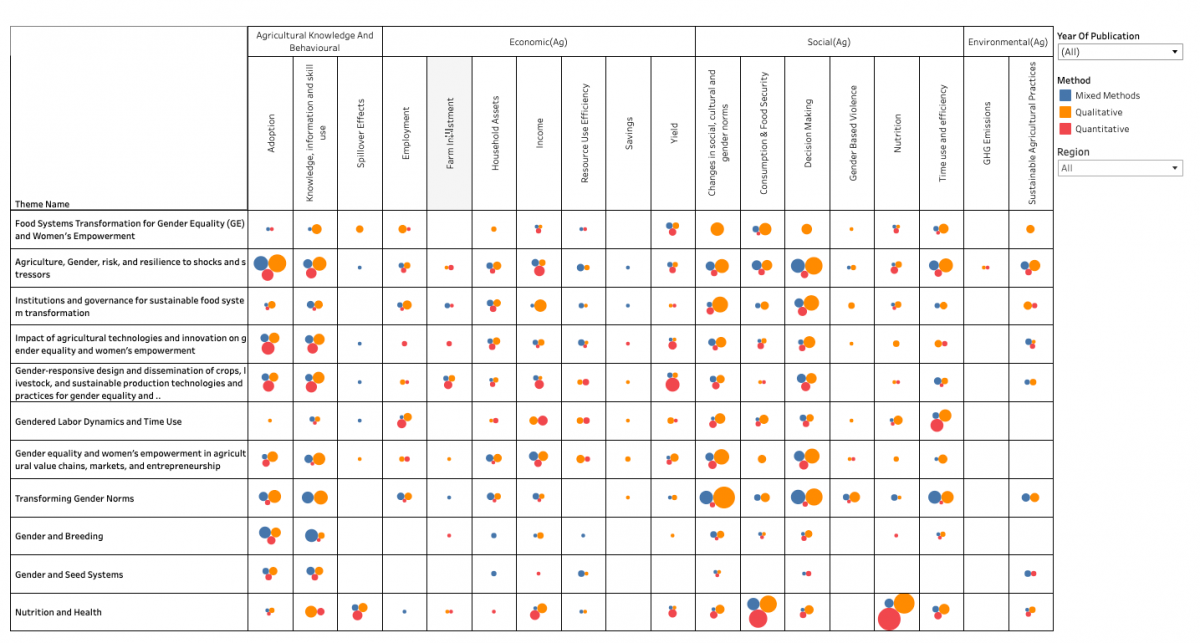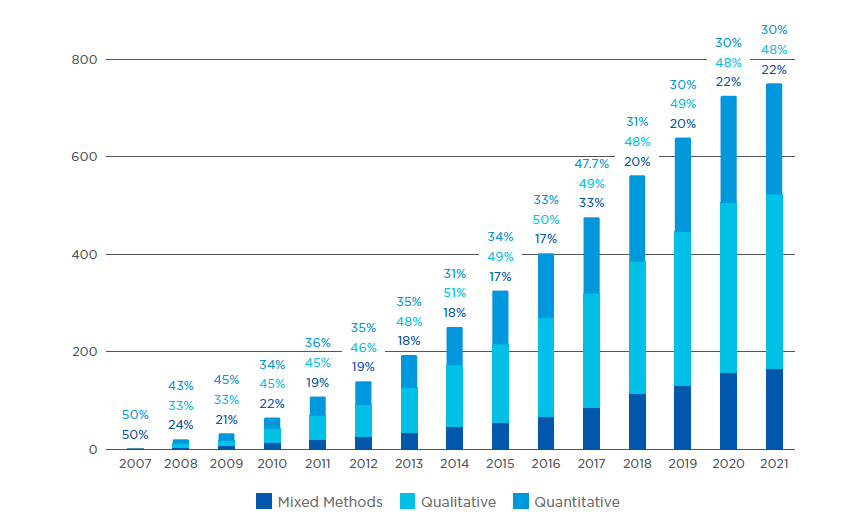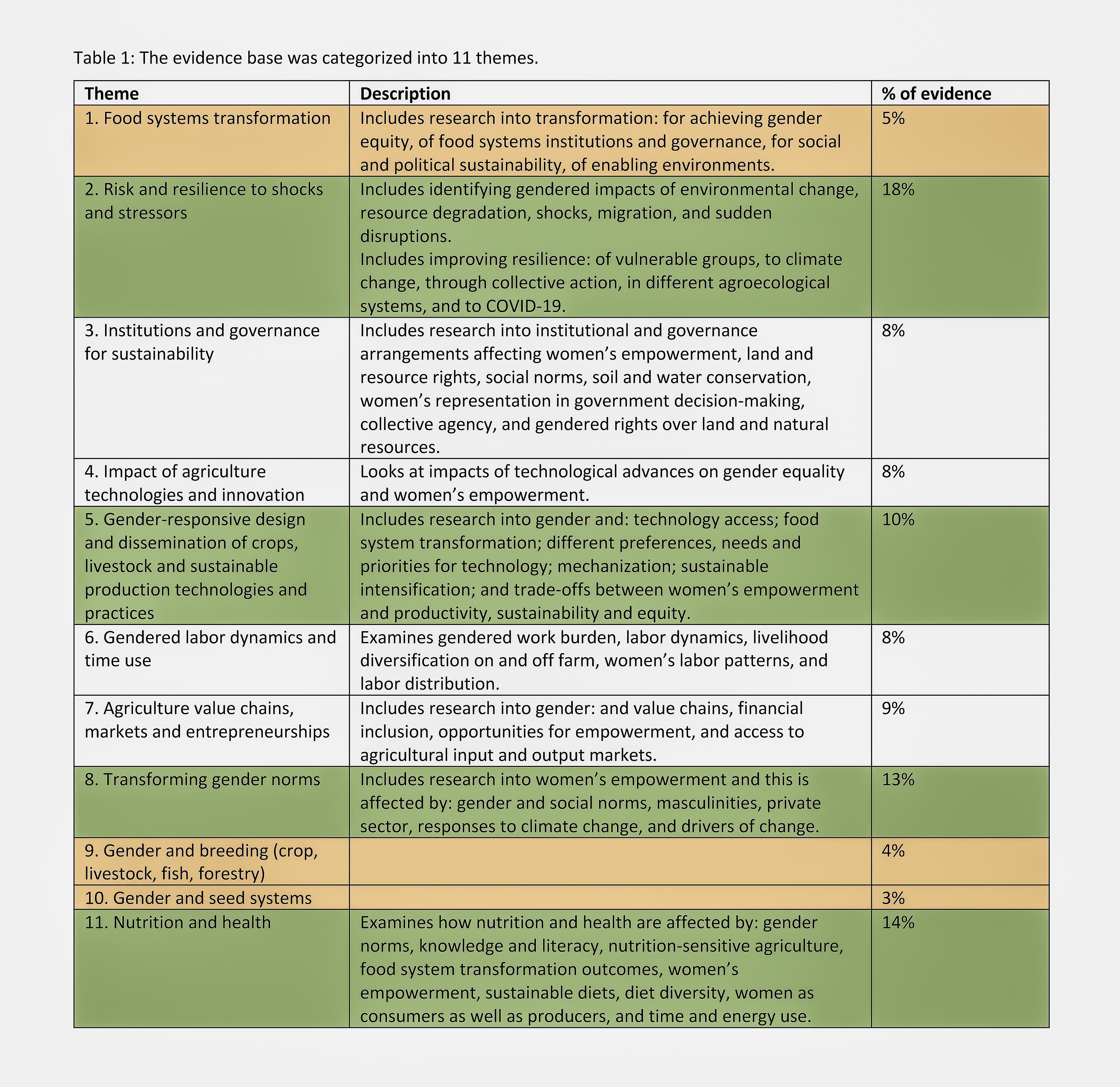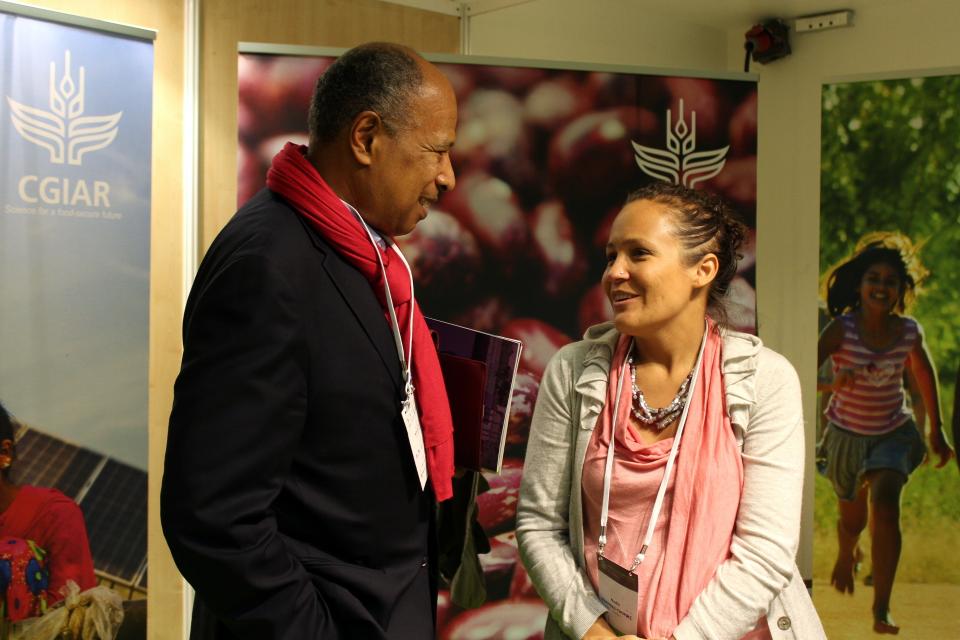Mapping the evidence needed to advance gender equality in agriculture and food systems
 Photo: Hanh Le/ILRI
Photo: Hanh Le/ILRI
While scientific literature on gender in agriculture and food systems has increased almost four-fold since 2007, critical geographic, thematic and outcome-based gaps are evident in the available evidence.
World food prices increased dramatically in 2007 and then again in 2010, pushing an estimated 44 million people into poverty. The food price crisis was especially severe for smallholder women farmers in developing countries.
A concerted effort by governments, multilateral agencies and other institutions after the crisis to support women in agriculture and address gender-power imbalances in food systems has not been as successful as it could have been.
It is for this reason that the CGIAR GENDER Platform commissioned a “mapping” of peer-reviewed evidence on gender in agriculture and food systems from Leveraging Evidence for Access and Development (LEAD) at Krea University in India.
LEAD, in collaboration with the GENDER Platform, developed an Evidence Gap Map that shows that while the scientific literature on gender in agriculture and food systems has increased almost four-fold since 2007, there are still critical geographic, thematic and outcome-based gaps in the available evidence.

EGM_Google_V9_with_caption. View source.
LEAD’s report to CGIAR says their map is a systematic organization and illustration of research evidence across different gender themes in agriculture and food systems. The map enables researchers to synthesize and generate new evidence in a more focused way, in support of well-founded policies and programs to drive gender equality in food systems.
Evidence map shows gaps in research for Latin America, and the Middle East and North Africa region
The evidence map was based on 752 peer-reviewed studies that were focused on Asia, Africa, Latin America and the Middle East and North Africa; were published between 2007 and 2021; and were available in English.
Researchers categorized the publications into the 11 themes (see Table 1) they addressed and the four outcome areas that publications analyzed: social, economic, environmental, and knowledge and behavior.
The evidence-base across all themes and outcomes is concentrated on Africa (52%) and Asia (33%). In contrast, research from Latin America (12%) and the Middle East and North Africa region (3%) was thin. For example, 6 of the 11 themes have less than 10 publications in Latin America, and all themes have fewer than 10 publications in the Middle East and North Africa region. The report authors acknowledge the language limitations of their study but point to studies in other fields that suggest excluding non-English publications has minimal impact on the results.

Gaps in research on how transforming food systems affect gender equality
The evidence gap map shows that more than half of all the evidence (54%) covers just four of the themes (shaded in green in Table 1). At the other end of the spectrum, three themes (shaded in orange) contribute to only 13% of the evidence base, indicating significant gaps in research in these areas.
Most of the themes showed an increase in evidence over time, mirroring the trend shown in Figure 1. Publications about food systems transformation (theme 1) increased after 2012, which may reflect a rising interest in understanding how the structures of food systems are changing. However, despite this theme being well-established, it is still a much under-studied theme. The low evidence base for themes 9 (gender and breeding) and 10 (gender and seed systems) indicate that these are emerging themes still to reach their full research potential, despite growing significantly after 2016.

Gaps in evidence on environment and economic outcomes important for women
Studies that analyze social outcomes (50%) significantly outnumber those that analyze knowledge and behavior outcomes (24%), or economic outcomes (22%), as shown in Figure 2.
Environmental outcomes (4%) were the least reported on in the evidence base. The research that did report on environmental outcomes was far more likely to report on sustainable agricultural practices than greenhouse gas emissions, which is a concern given the effects of climate change on smallholder women farmers.
Reported social outcomes focused on decision-making and social, cultural and gender norms. Gender-based violence received far less attention. Most of the evidence on economic outcomes was focused on income, yields and household assets, with very little consideration of savings important for women achieving some level of independence.
Interestingly, most evidence about gender and technology interacting (themes 4 and 5) did not focus on social or economic outcomes but examined agricultural knowledge and behavior. The same was true for themes 9 and 10 researching gender and breeding and seed systems.
Increase in use of qualitative and mixed methods research for deeper and more nuanced understanding
Research into gender in agriculture and food systems increasingly used qualitative methods—from 33% in 2008 to 48% in 2021 (see Figure 1). This is not surprising given that research exploring gender roles, social and cultural norms, power relations and household dynamics is likely to gain more depth and nuance from qualitative research. The report authors add that: “Over the decades, gender research has evolved to include more non-traditional qualitative tools like life stories, personal histories involving individuals, social institutions, political institutions, various cultures and social settings….”
The themes still largely using quantitative approaches measured the impact of agricultural technologies on gender equality and empowerment, gender-responsive design and dissemination of technologies and practices, and nutrition and health.
However, since 2010, there has been a growing body of research using mixed methods to study the complexities of gender in agriculture through a multi-disciplinary lens. Such an approach is likely necessary to provide an even deeper understanding of gender issues and was found to be popular in the emerging themes of gender and seed systems, and gender and breeding.
More research in under-represented countries and on varied outcomes can lead to better food systems
Women contribute nearly 43% to the global agricultural workforce, with increasing roles to play in different facets of agriculture and food systems. As such, the map of evidence gaps documents where further gender-based research is most urgently needed.
Geographically, it appears that evidence is lacking for all themes in Latin America and the Middle East and North Africa region. A country-wide analysis of the evidence in these regions may point the way to more specific gender research needs. Further research is also needed to map and synthesize the evidence found in other languages, especially Spanish, French and Arabic.
There is no doubt that the spectrum of gender research has broadened over the past decade, and especially in the last five years. However, even publications covering well-represented themes in the evidence tend to cluster around just a few outcomes.
This suggests the need to promote and invest in more multi-dimensional research. Such research is necessary if we are to gain the evidence needed to inform policies and priorities designed to create more sustainable and equitable agriculture and food systems.


